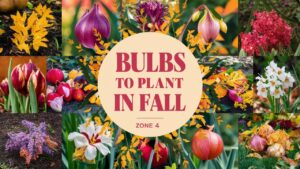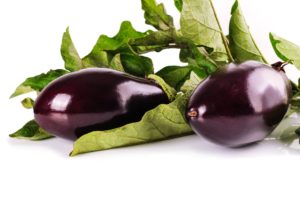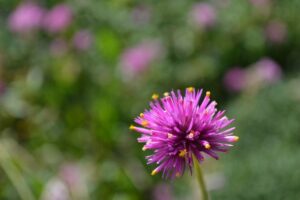Creating a shade garden can be a delightful project, especially in Minnesota, where the climate can be challenging due to its cold winters and warm summers. However, shade gardens offer the perfect opportunity to grow a diverse array of plants that brighten up the darker corners of your landscape.
This guide covers some of the most captivating shade-loving plants that will thrive in Minnesota, giving you the tools to design a lush and beautiful garden that flourishes despite low light conditions.
Aconitum carmichaelii ‘Arendsii’ (Monkshood)
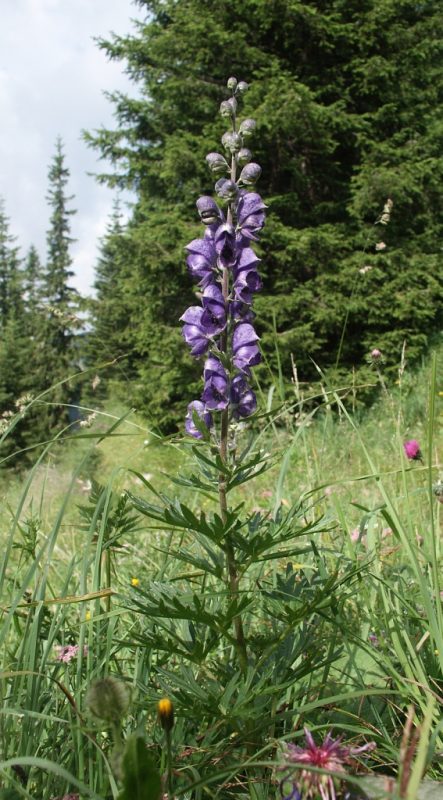
Aconitum carmichaelii, affectionately known as Monkshood, is a stunning addition to any shade garden. This perennial showcases tall spikes of vibrant blue flowers in late summer to early fall, creating a striking visual element against a backdrop of green foliage. The plant can reach heights of up to 4 feet, making it an excellent choice for adding height to your garden beds.
Monkshood prefers moist, well-drained soil, and thrives in partial to full shade, making it ideal for woodland gardens. However, gardeners should use caution: all parts of the plant are toxic if ingested, so ensure that pets and children are kept at a distance. The plant’s unique flowers are not only beautiful but also attract pollinators like bees and butterflies, contributing to the biodiversity of your garden.
Anemone tomentosa ‘Robustissima’ (Windflower)
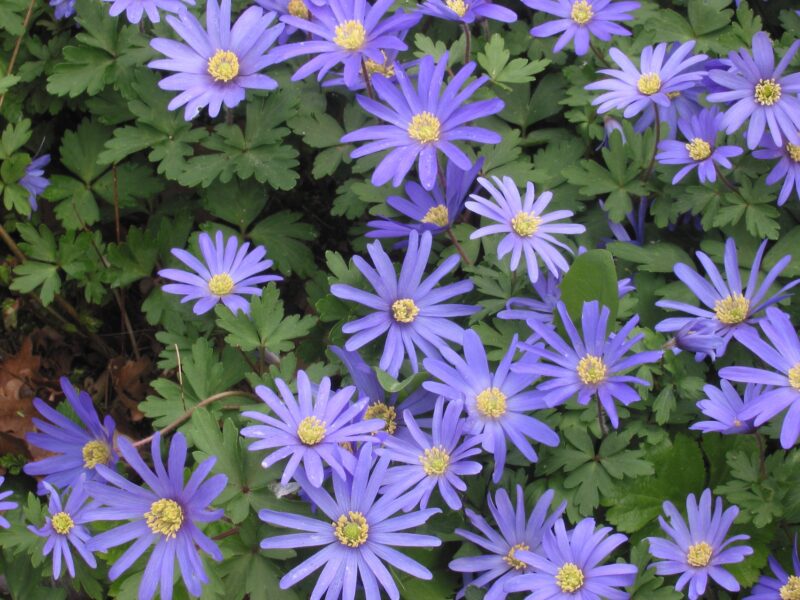
The Robustissima variety of Anemone tomentosa, or Windflower, is a vigorous perennial that is sure to charm with its profusion of delightful pink flowers. Blooming in late summer and extending into fall, these plants create a lovely carpet of color when many other plants have finished blooming.
Windflowers prefer dappled sunlight or partial shade, thriving in a variety of soil types as long as they are well-drained. They are relatively low-maintenance, making them perfect for beginners. Moreover, these plants are excellent for naturalizing in shaded areas, bringing life and movement to the garden floor. Their foliage is attractive as well, with deeply dissected leaves that remain lovely even after the flowers have faded.
Aruncus dioicus (Goats Beard)
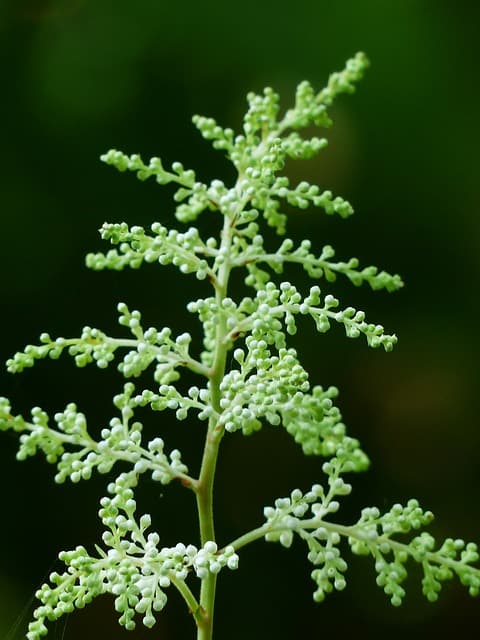
Goats Beard, scientifically known as Aruncus dioicus, adds a touch of elegance to shaded gardens with its feathery plumes of creamy white flowers that resemble astilbe blooms. This tall perennial can grow between 3 to 6 feet tall, making it an impressive focal point in any garden.
Goats Beard thrives in rich, moist soil, and its preference for partial to full shade makes it an excellent candidate for Minnesota’s diverse garden scenarios. Unlike many other perennials, Goats Beard provides both texture and height without overwhelming smaller plants, allowing for layered plantings that create depth and interest. Its attractive foliage, which consists of attractive compound leaves, adds a lush element to the shade garden even when not in bloom.
Astilbe (False Spirea)
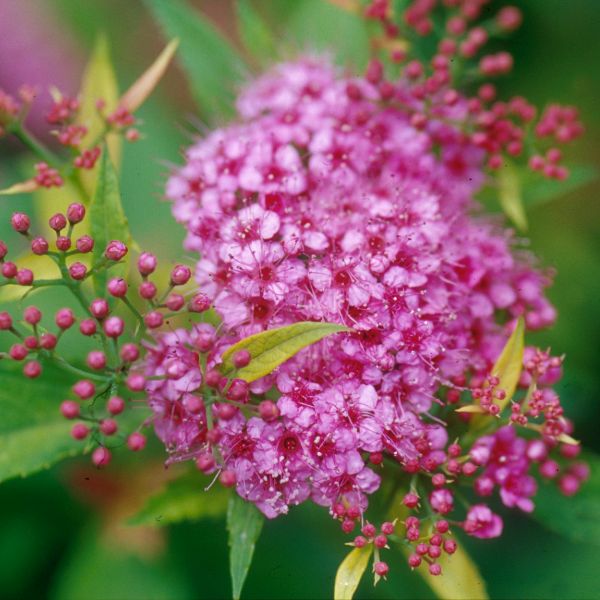
Astilbe is a quintessential shade garden plant that excels in Minnesota’s climate, offering a splash of color with its plume-like flowers that range in shades from white to pink and red. This perennial thrives in moist, fertile soil and prefers partial shade, making it perfect for those tricky shaded spots under trees where many other plants struggle to thrive.
Astilbe has a bushy form that can reach heights of around 2 to 4 feet, giving your garden a soft, romantic feel. This plant’s lush foliage remains vibrant throughout the growing season, providing a beautiful backdrop to the colorful flower spikes. Additionally, Astilbe attracts hummingbirds and butterflies, adding to the life in your garden. For a harmonious look, consider grouping different varieties together to create a dreamlike scene that draws the eye.
Bergenia cordifolia (Pigsqueak)
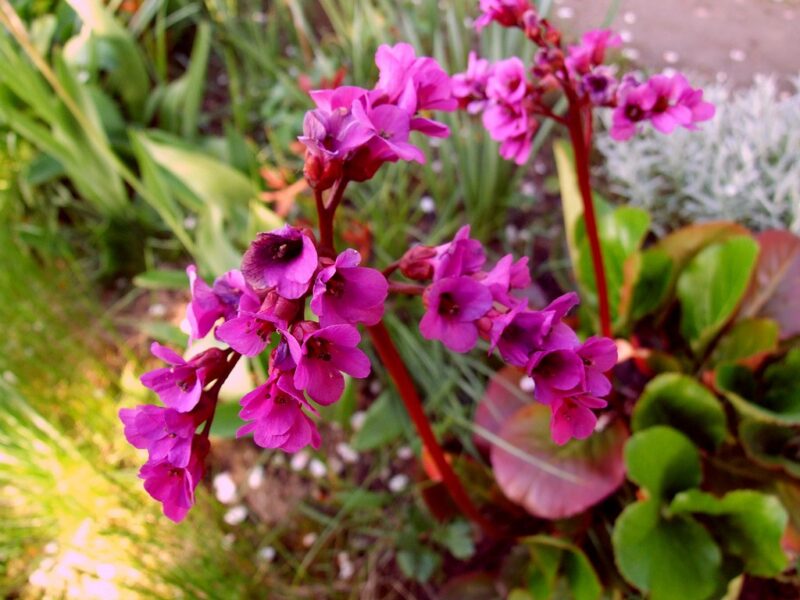
Bergenia cordifolia, commonly known as Pigsqueak, is an underappreciated gem for shade gardens. Its broad, leathery leaves can create ground cover that adds texture and interest to the landscape. The leaves emerge green in spring, then turn a stunning reddish hue in the fall, providing year-round visual appeal.
Pigsqueak blooms in early spring with clusters of pink flowers on erect stalks that rise above its foliage. It thrives in a wide range of soil types and tolerates both dry and moist conditions, making it quite adaptable. Once established, this perennial requires minimal care, making it a great choice for beginners. Its resilience and ease of growth make it an ideal companion for other shade-loving plants.
Chelone lyonia (Turtlehead)
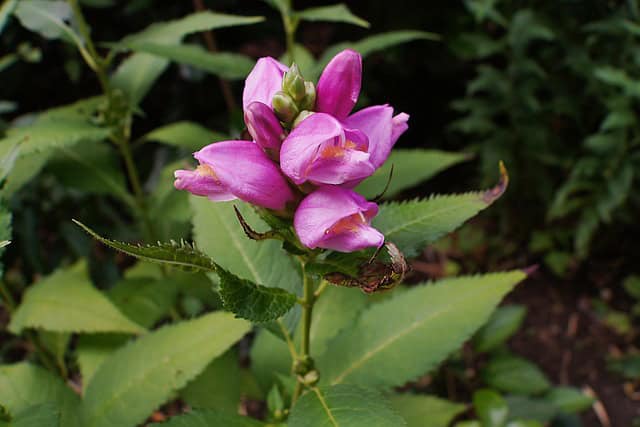
Chelone lyonia, popularly known as Turtlehead, captivates with its unique flowering habit, resembling the head of a turtle. This perennial blooms in late summer to early fall with delicate white or pink flowers that appear in clusters. Turtlehead thrives in moist, well-drained soil and prefers partial shade, making it the perfect addition to your shade garden.
An interesting fact about Turtlehead is its ecological role; it serves as a host plant for several species of butterflies and moths, particularly the Baltimore checkerspot butterfly. Besides its ecological benefits, its foliage is attractive, boasting glossy green leaves that can brighten up a shaded area. Turtlehead can spread but remains manageable, creating a naturalistic look in the garden.
Hakonechloa macra (Japanese Forest Grass)
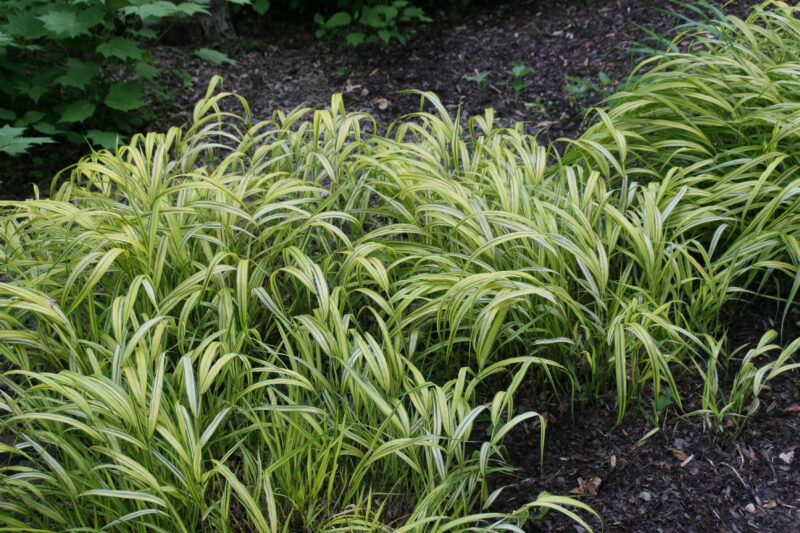
For those who appreciate ornamental grasses, Hakonechloa macra, or Japanese Forest Grass, is a must-have for shade gardens. This graceful and delicate grass features arching leaves that create a soft, cascading effect, adding movement to your landscape. The plant’s structure makes it ideal for filling in borders or softening hard edges.
Japanese Forest Grass thrives in partial shade and prefers moist, well-draining soil. Its stunning golden or variegated green foliage provides a pop of color and contrast in shady areas. In fall, the grass takes on beautiful amber tones, prolonging its seasonal interest. This perennial requires minimal maintenance, making it perfect for those who desire a low-maintenance but visually interesting garden.
Ligularia dentata (Leopard Plant)
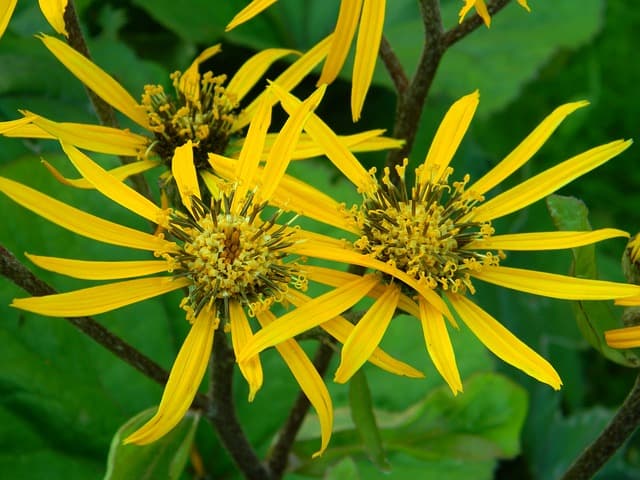
Ligularia dentata, commonly referred to as Leopard Plant, is a fantastic choice for those seeking bold foliage. With large, heart-shaped leaves that can grow quite large, they create a dramatic effect in the garden. The stunning yellow flower spikes emerge in mid-summer, rising above the foliage, creating an eye-catching display.
Leopard Plants prefer moist soil and thrive in partial to full shade, perfect for those cool, damp spots in your garden. This perennial is also deer-resistant, making it a great option for gardens that face wildlife challenges. Its unique leaf shape combined with its bright flowers makes it a conversation starter in any shade garden.
Pulmonaria (Lungwort)
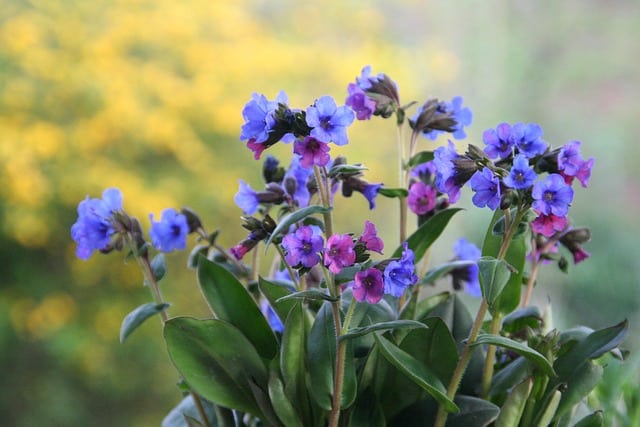
Pulmonaria, or Lungwort, is a charming perennial that should not be overlooked in your shade garden. Its spotted leaves provide visual interest throughout the growing season, and in spring, the plant bursts forth with delicate blue, pink, or white flowers. These blooms are among the first to appear in the garden, making Pulmonaria a delightful herald of spring.
This hardy plant flourishes in moist, well-drained soil and thrives in partial to full shade. Lungwort is also known for its ability to tolerate a variety of soil conditions, making it a versatile option for many gardeners. Its low-growing habit makes it perfect for edging pathways or filling in under trees, adding a soft touch to any shaded area.
Hostas
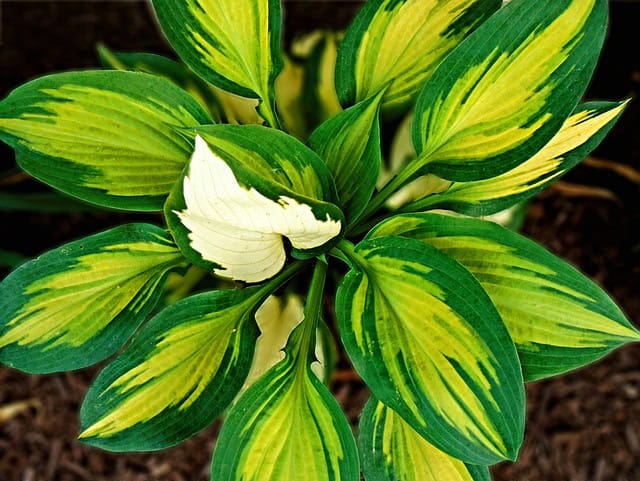
No shade garden would be complete without the ever-popular Hosta. With a myriad of varieties available, hostas offer diverse foliage shapes, colors, and patterns, ensuring that you can find the perfect match for your garden style. From large-leaved varieties that create a bold statement to smaller types that fill in the gaps, these plants cater to any gardener’s needs.
Hostas thrive in moist, rich soil and are happiest in partial to full shade. Their lush foliage can range from deep green to variegated blue and gold, and they produce lovely flower spikes in summer that attract pollinators. A bonus of hostas is their resilience; once established, they require little maintenance, allowing beginners to enjoy their beauty without overwhelming care routines.
Ferns
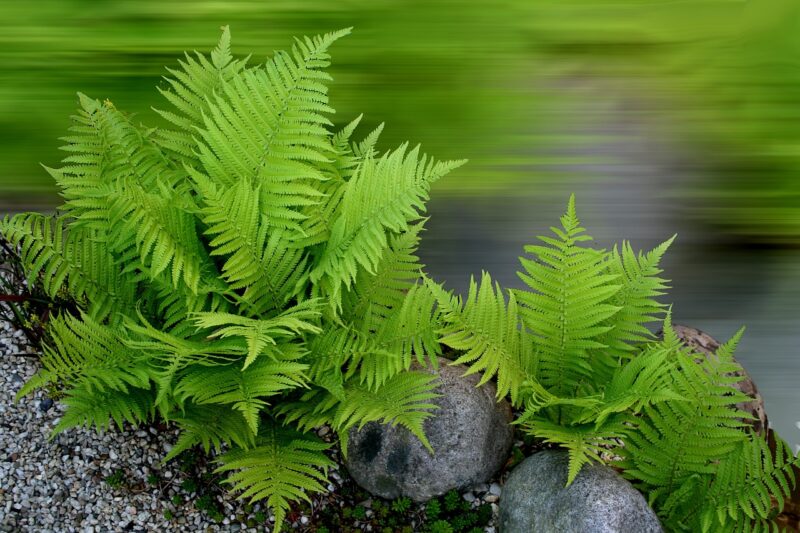
Ferns are an essential component of any shade garden, bringing a texture and softness that few plants can rival. Various species are well-suited to Minnesota’s shaded areas, including the Lady Fern (Athyrium filix-femina) and the Ostrich Fern (Matteuccia struthiopteris). Each type offers unique fronds that dance in the breeze, adding movement and life to the garden.
Ferns thrive in moist, well-drained soil and prefer locations that offer partial to full shade. They are ideal for creating a naturalistic look, allowing gardeners to mimic woodland habitats. In addition to their aesthetic appeal, ferns are low-maintenance plants, making them an excellent choice for beginners who may be intimidated by more demanding species.
Heucheras (Coral Bells)
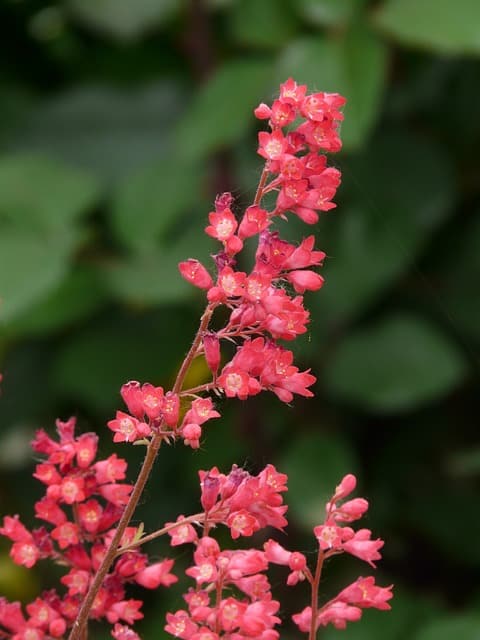
Heucheras, commonly known as Coral Bells, are another fantastic choice for shade gardens, thanks to their vibrant foliage and delicate flowers. The leaves come in an array of colors, from deep crimson to bright lime and even silver, ensuring there’s a variety to suit every style. In late spring to early summer, delicate flower spikes emerge, attracting hummingbirds and other pollinators.
These perennials prefer well-drained soil and thrive in partial shade, making them suitable for various garden locations. With minimal care required once established, Heucheras are perfect for beginners looking to add interest and color to their shaded areas. Plant them in clusters for a dramatic effect or scatter them throughout the garden for a more natural look.
Solomon’s Seal
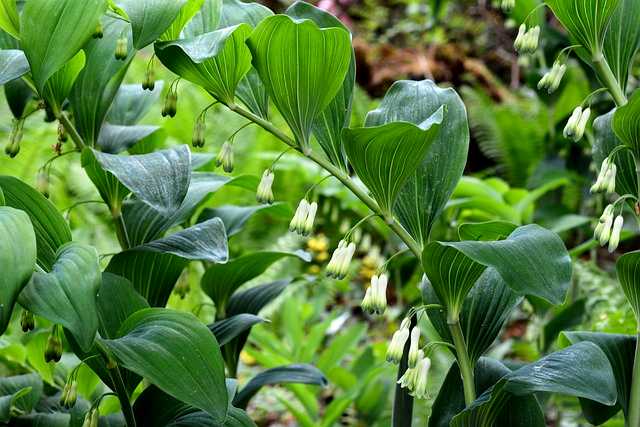
Solomon’s Seal (Polygonatum biflorum) is a graceful perennial known for its arching stems and beautiful, bell-shaped flowers that hang delicately in pairs. This plant brings an airy quality to the shade garden and blooms in late spring to early summer, offering a subtle charm that works well in woodland settings.
Solomon’s Seal prefers rich, well-drained soil and thrives in partial to full shade. It’s also revered for its adaptability; once established, it can tolerate a variety of environmental conditions, making it a resilient choice for any garden. Its unique form and ornamental value have made it a popular favorite among gardeners seeking to create a serene and inviting space.
Bleeding Hearts (Dicentra)
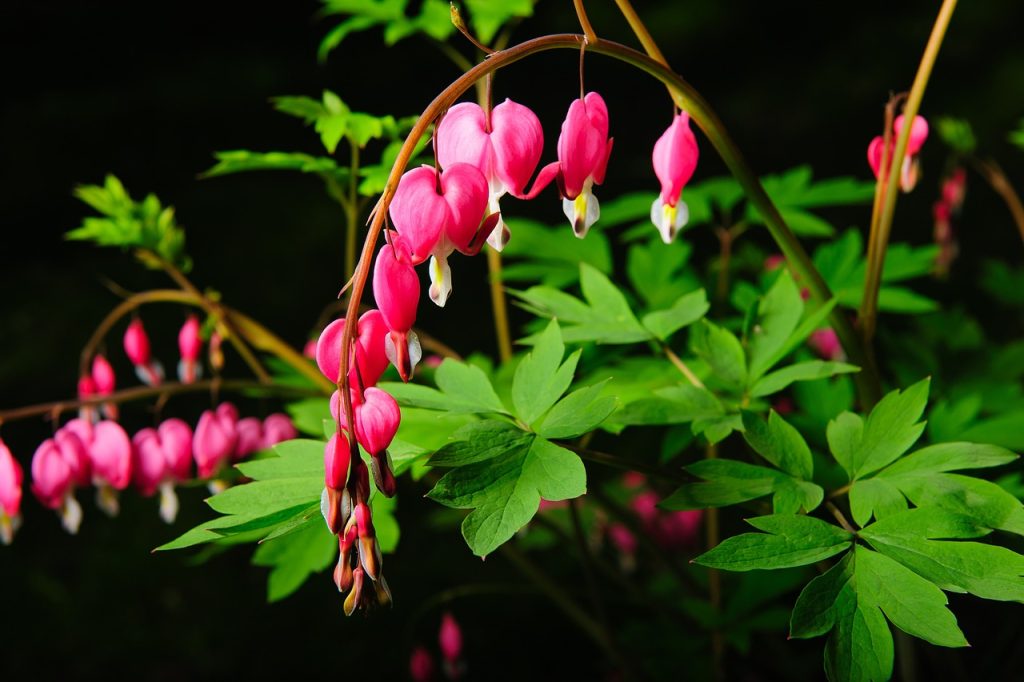
Bleeding Hearts (Dicentra spectabilis) are known for their exquisite and unusual heart-shaped flowers, which dangle from arching stems. They bloom in spring, filling the garden with a cascade of pink or white blooms that can evoke feelings of nostalgia and romance.
This perennial thrives in moist, well-drained soil, preferring partial shade, making it perfect for edging along woodland paths or filling the space between larger plants. While Bleeding Hearts may die back in the summer heat, their early spring show is well worth the wait. Their foliage remains lush and green throughout the growing season, providing added texture to your shade garden.
Brunnera (Siberian Bugloss)
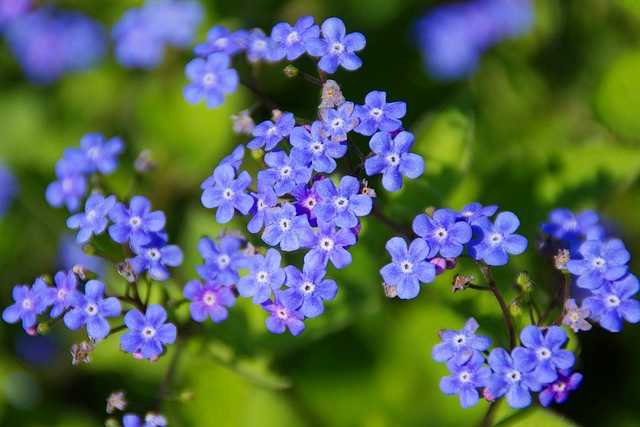
Brunnera, commonly known as Siberian Bugloss, is a delightful perennial that offers both beautiful flowers and striking foliage. The small, forget-me-not-like blooms in early spring add a cheerful touch, while the broad, heart-shaped leaves provide year-round interest with their striking patterns.
This plant thrives in moist, well-drained soil and is perfect for partial to full shade. Its low-growing habit makes it suitable as a ground cover, helping to suppress weeds and retain moisture in the soil. Brunnera’s resilience, charm, and elegance make it an ideal choice for beginners looking to create a lush and inviting shade garden.



